Contemporary Northwest Art Awards, 2013
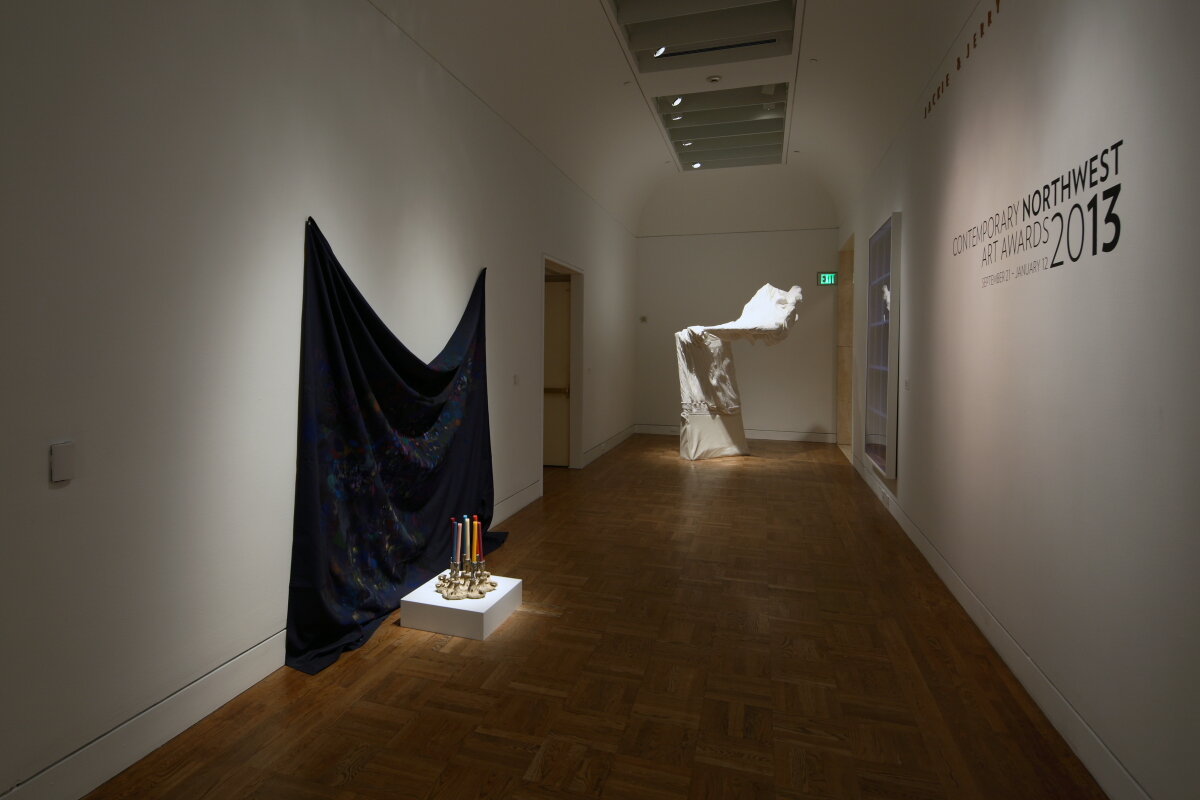


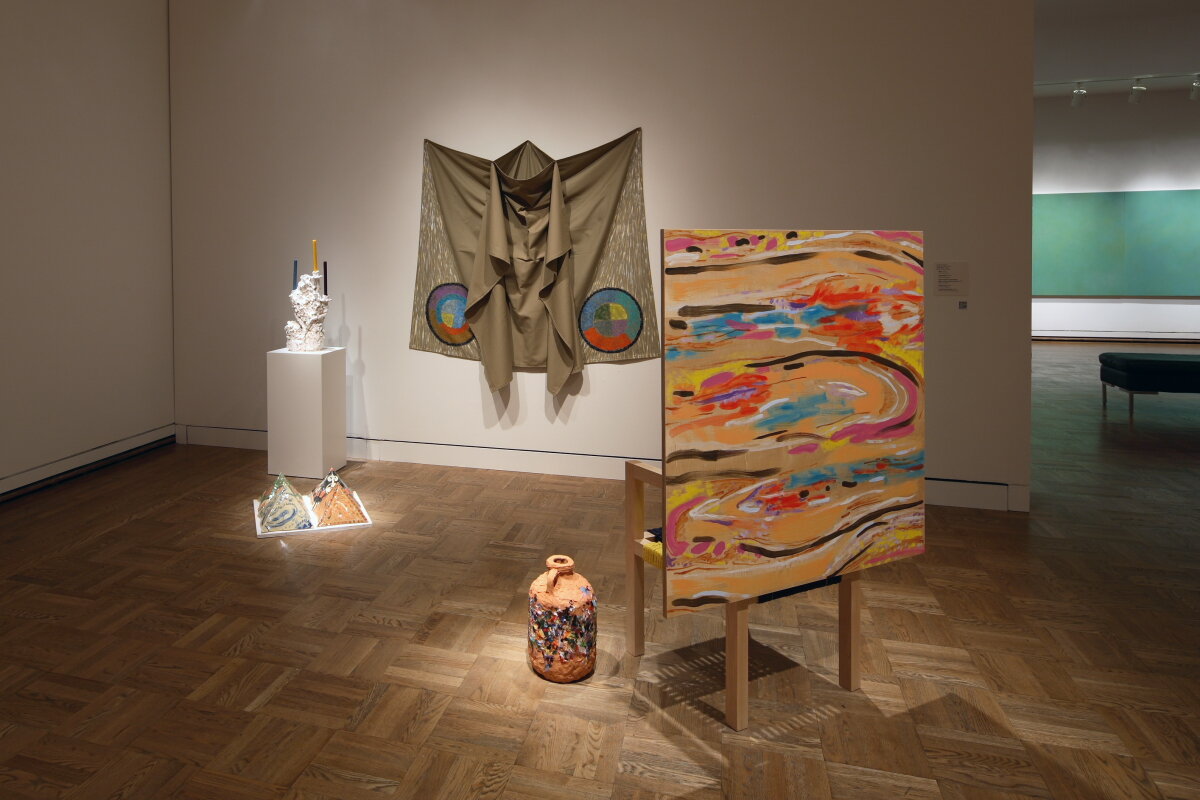
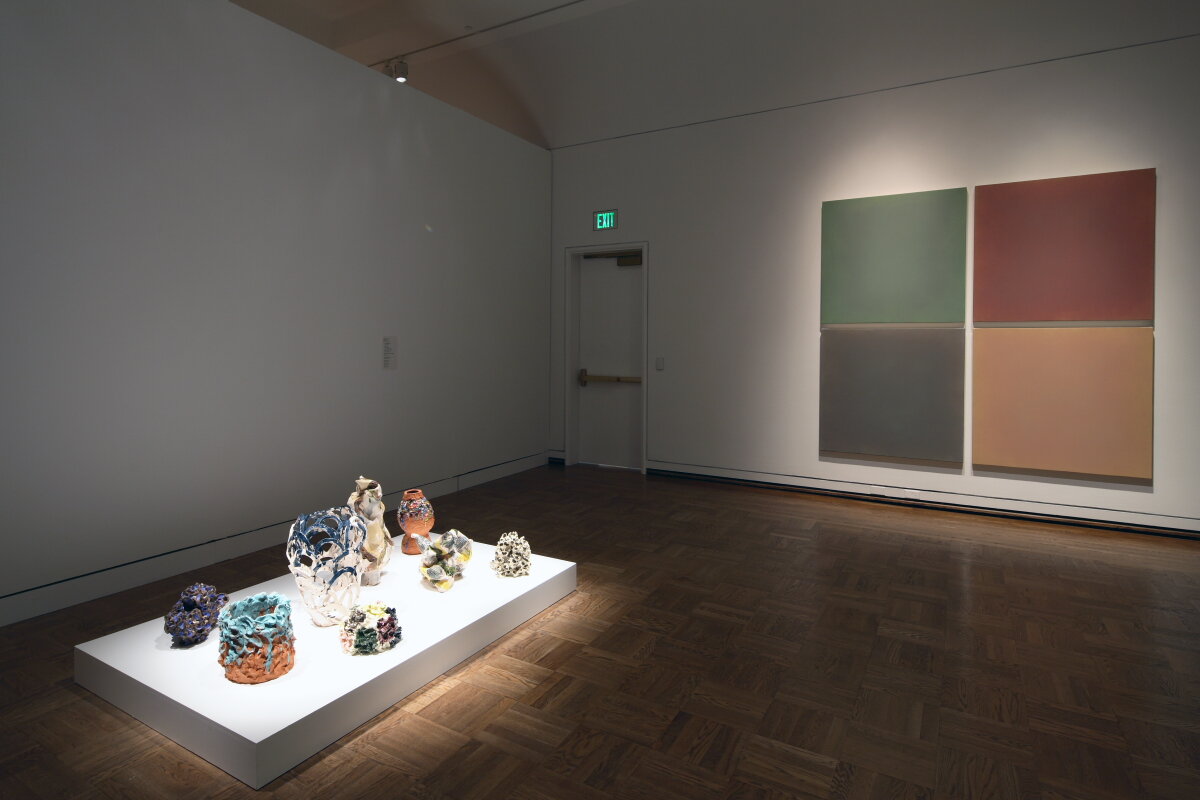
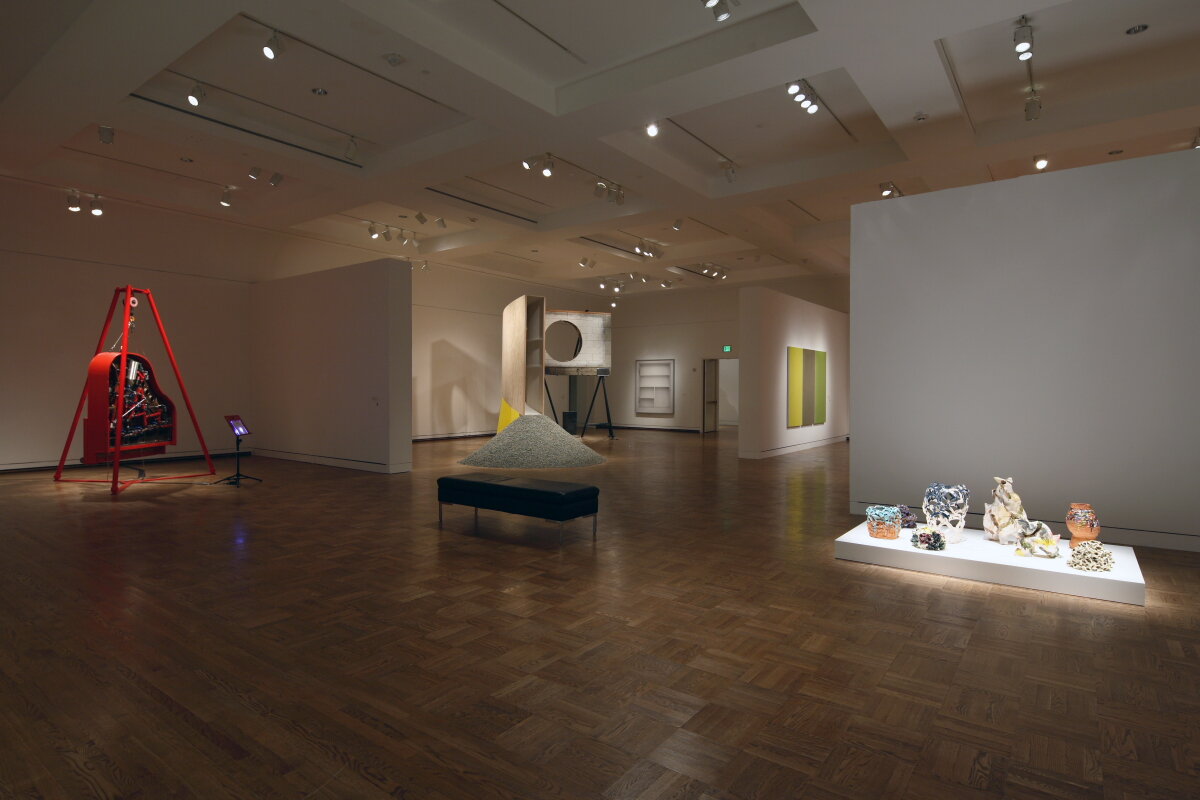
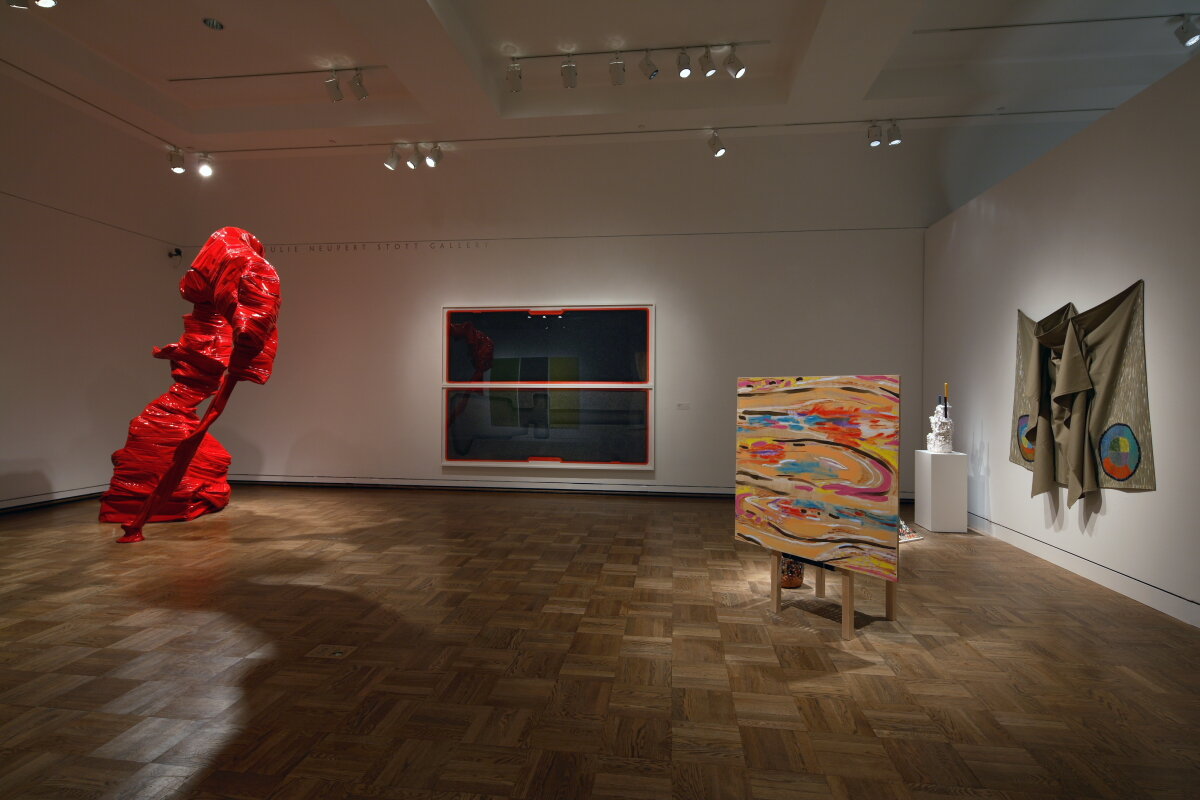
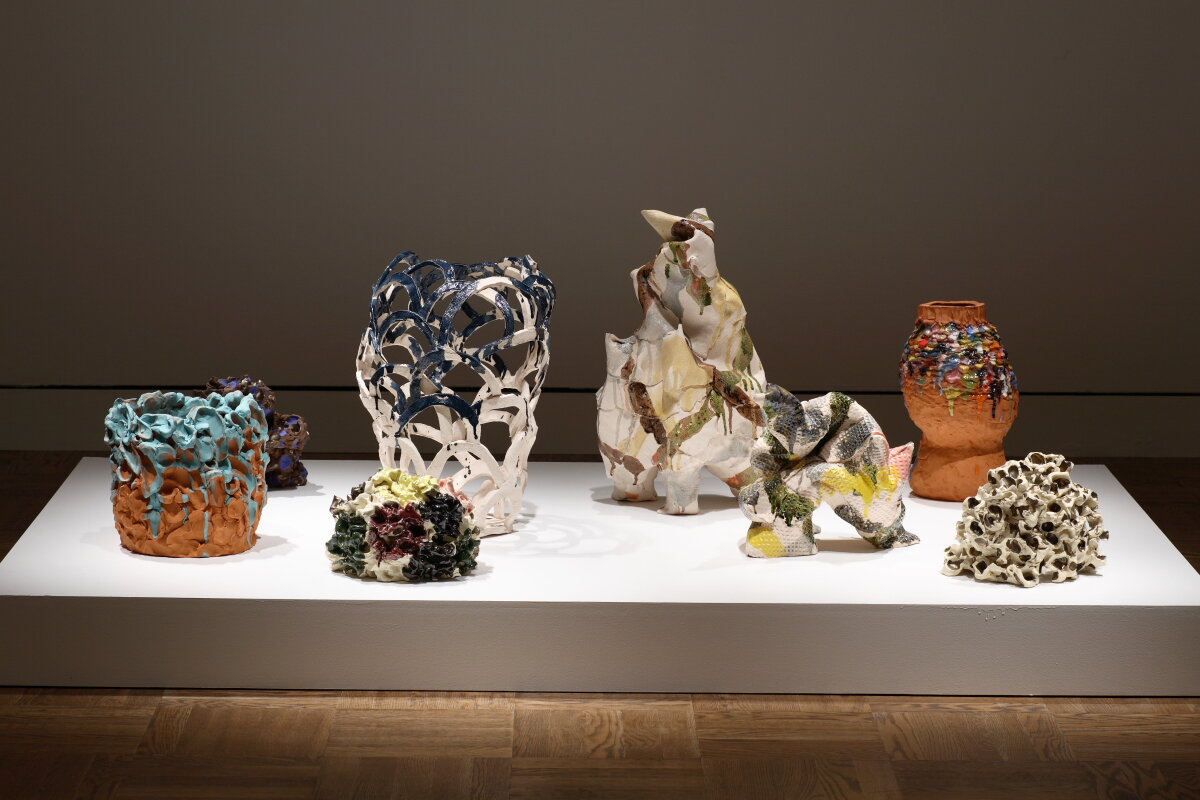
Curated by Bonnie Laing-Malcolmson
September 21, 2013 - January 12, 2014
Portland Art Museum, Oregon
Excerpted from the exhibition catalog:
Incohate, colorful, klutzy, whimsical, and domestic are among the many apt descriptors for Nicholas Nyland’s installations of grouped objects. The works are also fresh, sincere, and savvy. Borrowing heavily from Henri Matisse, Nyland employs a witty, stripped-down modernism that honors the painterly tradition while venturing into a completely unselfconscious world. Nyland’s art is as fresh and sophisticated as a Post-Impressionist’s, as uninhibited and honest as a young child’s, and sometimes as confrontational as both.
Because the handmade is so clearly evident in Nyland’s work, the uninitiated may interpret it as naive. In Nocturne, 2012, a navy-blue canvas tarp sags languidly between grommets with blots of bright paint, bringing to mind Van Gogh’s whorl’s of color in The Starry Night, 1889, or Café Terrace at Night, 1888. There is a compositional astuteness in the way Nyland’s colors are cradled by the curving folds of fabric and the way repeated blots of cerulean, yellow, and orange lead the eye up across the canvas like a burst of fireworks sparks. The departure from traditional stretched canvas de-formalizes the piece, while the grommets and crude fingerprinted impressions in the candlestick’s surface speak to folk art. The artist places heavy emphasis on the relationships between objects: the painted cloth and the eight-armed candlestick become more powerful through juxtaposition and a compelling implied narrative. The two objects appear to be the detritus of an event, suggesting flickering candle light, wizard’s cloaks, and swashbuckling romantic pre-electrical nights. Nyland’s use of tableau fosters a magical inventiveness that leaves the viewer in search of the fairy-tale world that the remaindered objects represent. In effect, the red slippers remain, but where is Dorothy?
Many of Nyland’s favorite artists appear to share his affinity for undisguised candor and his love of Matisse. This eclectic but intelligently cohesive group includes painters, designers, and object makers such as David Hockney, Betty Woodman, Ken Price, Odilon Redon, Patrick Heron, Ettore Sottsass, Howard Hodgkin, Lucio Fontana, and Franz West. These artists share a lyrical expressiveness, development of simplified form, a focused interest in materiality, and, in most cases, the use of intense, fully saturated color. The British painters Heron and Hodgkin reference Matisse and the Fauves through their use of simplified shape and bright color, while limiting the number of forms in their compositions and employing purely abstract imagery. Their work, like Nyland’s reduced representation to its basic elements. Heron’s electric colored shapes, reminiscent of interlocking plant forms, remian purely abstract, as do Hodgkin’s boldly stroked impastos and blots of color that reference landscape and horizon. Hockney, like Matisse, elevates his domestic environment to a place where any object or being, be it a chair or a dachshund, becomes a symbol of humanity—a personally treasured thing given importance through the simple act of choosing to paint it. The works of these painters are personal, emotive objects free of artifice, and that is the essence of their appeal for Nyland.
Soon after beginning his study of art in painting, Nyland realized that he was interested in the painting as an object imbued with multiple meanings.(1) In this sense, a painting is not necessarily “of” anything—it is simply an object. Nyland arrived at this conclusion while learning to model clay, influenced in part by Saya Moriyasu, a ceramic artist and friend who would invite groups of artists to her studio to make things. The playful social interaction of artists working in a group environment had a permanent effect on Nyland, for whom producing work became more experimental and also more fun. He was enamored of the immediacy and malleability of clay, and he often found the results of the process—from the initial forming through firing—to be pleasantly unpredictable. In addition to making numerous ceramic objects in recent years, he has moved his painting away from traditional paper and canvas and on to objects, creating tableaux of panted and sewn fabric works, glazed an painted ceramics, and artist-fabricated wood works. While paint, often in the form of glaze, remains an integral component of these works, the construction of tableaux is increasing important. Nyland loves the freedom to play with juxtapositions of objects that, depending on their arrangement, may elicit a variety of responses from the viewers,
Nyland’s interest in associative meaning was influenced in part by his exposure to Chinese spirit stones, also known as scholar’s rocks. The rocks were greatly prized in the Tang Dynasty and continue to inspire the imagination of those who contemplate their complex forms. Thought by scholars to be the universe in miniature, the stones were appreciated for the way they resembled the landscape, a human figure or a an animal. Prized for the qualities of awkwardness and resonance (ringing when struck), the strangely contorted stones were referred to as guai shi, or “strange stones". One finds similar descriptors appropriate for Nyland’s purposely clumsy ceramic sculptures, Sphinx, 2010, and Gold Stone, 2010, appear to be randomly formed. These stoneware sculptures are indented with thumbprints in which splotches of glossy glaze create a reflective pattern so pronounced that it flattens the form, making the pieces difficult to visually read as sculptural objects. Concurrently, the shift from dry, raw fired clay to a slick glazed surface makes the sculptures intriguingly touchable—the work begs to be handled. Their frank construction is paradoxical: simple yet complex, naïve yet sophisticated. The vessel-like objects on the tarp in Market Day seem to flaunt the idea of useful versus non-utilitarian, begging the questions: Is this art or craft? Is it sculpture? If the works are contemplated like the Chinese scholar’s rocks, what worlds of the imagination do these misshapen lumps open up for the viewer?
Conversations about whether a work is art or craft subsided in the late twentieth century as postmodern artists embraced pluralisti views about concept, media, and presentation that have become broadly accepted in the new millennium’s fine art circles. Nyland loves handcraft and uses it to create a personal style. The idea of style, like craft, had become problematic int he world of art. The presence of a clear personal style seemed to denote being too affected by the times or by a rote approach to design. Nyland is fascinated by the intersection of fine art, product design, architecture, and designer fabrics and about how a unique personal vision may be formed through an amalgamation of disparate disciplines. Experimental, youthful, and colorfully exuberant, his work has a carefully developed style that touches upon all of his influences and is also stylishly anti-aesthetic. He has built a corpus of work that is both highly personal and clumsily appealing. Appearing offhanded, Nyland’s art challenges the viewer to take it seriously and find meaning.
By Bonnie Laing-Malcolmson, 2013.
———
(1) Conversation with the artist, March 28, 2013